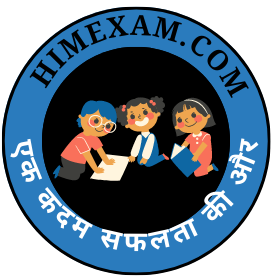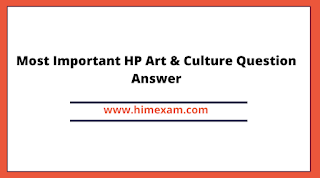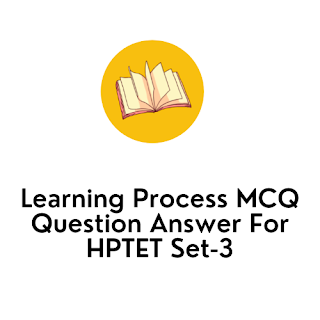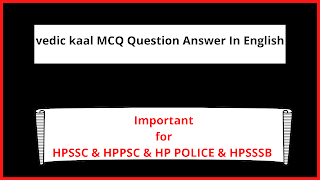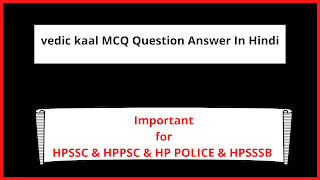HP Art & Culture one liner Question Answer in english
|| HP Art & Culture Question Answer || Most Important Himachal Pradesh Arts and culture one liner Question Answer ||
- Who has called the dialects of Himachal in their linguistic survey the Western Pahari dialects which extend from Jaunsar Babar of Uttaranchal to Bhadarwah of Jammu. – George Grierson.
- Pattani Boli speaks in which district – Lahaul-Spiti.
- Dialection of Churdhar Hills of Sirmaur – – Giripari and Viswai.
- Dharti – Dialect of Sirmaur.
- Baradi- Kotkhai, dialect of Rohdu .
- Kochi- Rampur- Bushahar , Kotgarh, dialect of Kumhar Sen.
- – Kullu is spoken. – Kulluvi.
- Which book did George Grierson write – Linguistic Survey of India.
- “The Kahluri dialect originated from Punjab – who concluded it – George Grierson.”
- Dialects of Kinnaur – Sanganori, Shumko, Kinnauri (75 percent people of Kinnaur use the famous Kinnauri by the name Homaskad).
- The dialect of Lahaul-Spiti. – Manched, Chagasa, Gheri, Bhoti.
- Malani. – Malana village of Kullu.
- The Pahari languages originated from the Paisachi Apabhramsa, it said. – by George Grierson.
- The talkery script was famous. – Among the Banis, Bookkeepers, Sudars and Shopkeepers.
- Talkary script originated. – From the Sharda script.
- . Talkary script was written. – Right to left.
- Tinan is the language of which valley – Chandraghati.
- H.P. In which language was the language of the oldest inhabitants – Kolaris.
- Who is the total goddess of Rampur valley? – Mahishasuramardini.
- Who is credited with spreading Buddhism in Himachal Pradesh in the 8th century? – Padmasambhava.
- Who gave the ancient Hindu rules (law)? – Manu.
- In which century did Padmasambhava propagate Buddhism in Himachal Pradesh? -In the 8th century.
- Which are the two branches of Buddhism? -Nahyan and Mahayana .
- Who is the Goddess of Pangwals? – Shakti (Durga)
- What was the name of Parashurama’s mother? – Renuka.
- With which place is the Buddhist saint Avalokiteshwar associated? – Trilokpur.
- What religion do 3/4 of Lahaul-Spiti follow? – Buddhism.
- Whose birthplace is Rivalsar? – Padmasambhava.
- According to Dwensong, which of Buddhism was popular in Kuluta (Kullu)? – Brazayan
- ‘Ruldhung’ is the name of which deity? -Shivji’s.
- Whose name is ‘Yumchenmo’? – Goddess Tara.
- The world’s oldest democracy is the god of Malana. – Jamalu Devta (Jamadagni)
- Usha is the goddess. – Raised daughter of Banasur, Anirudh.
- Hateshwari Devi. – Mother Durga’s second name (in Hatkoti Shimla)
- Who is Dattatreya? – Teacher of Parashurama.
- Where did Sheshnag find Parvati’s earrings? – Manikarna (Kullu)
- Where did Sheshnag find Parvati’s earrings? – Manikarna (Kullu)
- In Malana village. – Jamadagni defeated Banasura.
- Who was Jamlu, the deity of Malana village in Kullu? – Sage Jamadagni.
- Whose practice was the place of peace? – of Parashurama.
- The holy place of which is related to Parashurama and his father Jamadagni. -Nirmand (Kullu)
- Manikarna is related to Guru Nanak Dev Ji.
- Which Sikh Guru worshiped to get a boon from Naina Devi? -Guru Govind Singh.
- Who is the deity to rule Malana village in Kullu district of Himachal Pradesh? – Jamlu Devta.
- Most of the sects of Himachal Pradesh belong to which community? – Brajyan.
- What percentage of people in H.P. are Hindus? – 95 to 96 percent (highest in India)
- Which of the following Jyotirlinga Jyotirlinga is located in H.P.? – Baijnath.
- Who is called the “Goddess of Snakes”? – Mansa Devi.
- Which community of Hindus worship Bhairon, Siddha Masani and Mata Masani? – Khatik community .
- Who said this about Spiti “This place is not for humans to live.” – Rudyard Kiplinga
- Who is the author of the book ‘Kulloot Desh Ko Kahani’? – Lalchand applicant.
- Who is the author of ‘Himalayan Circuit’? – G.D. Khosla.
- Who is the author of ‘Travel in the Himalayan provisions of Hindustan’? – William Moorecraft.
- Who wrote the book “Introduction to Himalayan”? – Rahul Sankrityayan .
- In which book Kalidas mentions the eunuchs? – Kumarasambhava.
- In which of his plays, the famous Sanskrit poet Kalidas has called the Himalayas “Devatma”? – Kumarasambhava
- Who is the author of the book “Himalayan Art”? – J.C. French.
- Who has written the book “The Wonderland Himachal Pradesh”? – Jagmohan Bhalokhara.
- Is the author of “Geography of Himachal Pradesh”? -KL Joshi.
- Who was the first British to place Kangra in his book? – Thomas Koryat.
- Is the author of “Sania Kinour”. – Ramakrishna Kaushal.
- Sansar Chand of Kangra has written the book. – J.C. French.
- Wrote the book of Waziri, the golden country of the Wizards of Kullu. -J . Calvert.
- The author of the book is History of Kangra Hills. – B.C. Ohri.
- Geography of Himachal is the author of the book. – S. C. Bose (Subhash Chandra Bose)
- There are books by MS Randhawa. – Trips to the Western Himalayas and Kangra paintings.
- Vipasha Patrika is published. – By the Department of Languages.
- Wrote the book Economics of Apples. -AL Nadda.
- The book has written the subject of full statehood. – Y.S. Parmar.
- Wrote the book Lahaul-Spiti, the wonder site of the Himalayas. – MM Gill.
- Lahaul-Spiti, Kinnaur in the Himalayas, wrote books. – S.C. Vajpayee.
- He is the author of the book ‘History of Punjab Hills States’. – J.K. Hutchison and Vogla
- Whose book is ‘Pravasi Mere Geet’? – of Shanta Kumar.
- According to folklore, which region of Himachal Pradesh was called the ‘End of the world’ (End of Habitable World)? -Kullu.
- Wrote the book ‘Dodra Quar’. – Sharabh Negi
- Has written the book ‘Yatra’. -s. R. Hernot.
- He is the author of the book ‘Earth Is Sacrifice’. – Shanta Kumar.
- He is the author of the book ‘Himalaya Paliandri’. – DN Majumdar
- Begane won’t be ‘is the author of the book. – Shanta Kumar.
- Who is the author of the book “Festival, Fair and Custom of Himachal Pradesh”? – Mian Govardhan Singh
- The author of “Budhist Monastries” (H.P.) is – O.C. Handa.
- Who helped William Moorcraft’s journey write about the Shimla and Punjab mountainous regions? – Trebeck George .
- Is the author of “Pahari Miniature Painting”. -Karl Khandelwala.
- Is the author of “Antiquities of Indian Tibet”. – AH Francke.
- Who compiled the “Settlement Report of Kangra Princely State” in 1889 AD? – GC Bars.
- The ‘chappal industry’ of which district is famous? – Chamba.
- H.P. Whose idol is installed in Kangra district? – Avalokiteshvara.
- In whose era did the Basohli School of Painting reach its zenith? – Raja Kirpal Pal
- What is a mountain painting? – A mixture of graffiti, miniature (miniature) paintings.
- Self Who was Chandu Lal Raina? -Painter (of Kangra painting)
- What was the main theme of Kangra School of painting? – Radha Krishna painting.
- Pala (Phalta) and Padma painter were associated with which princely state of Punjab Hillsstate? –Kangada Principality (Sansar Chand)
